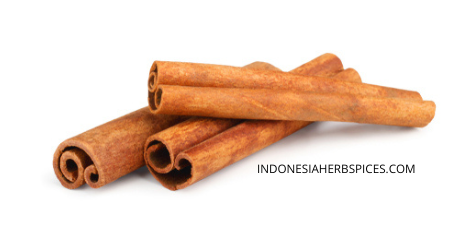Where does cinnamon grow naturally? Many people already know the benefits of cinnamon for seasoning and health. But not many know the history of this oldest spice. In this article, we will tell you the history of cinnamon, including where it is originally from and where it naturally grows.
Cinnamon’s Place of Origin
Cinnamon is one of the oldest spices that humans use. This spice was used in ancient Egypt around 5000 years ago and mentioned several times in the Old Testament books. Back then, cinnamon was used for the cremation of Egyptian kings. Ancient people also traditionally used it as a supplement for a variety of illnesses, such as heart disease, skin disease, and arthritis.
They mixed cinnamon and honey to cure those diseases. Cinnamons are trees originally from Egypt. It is used for the cremation of Egyptian kings so that the ashes smelled good. Since this spice was extremely expensive in Egypt, traders from Pakistan and India only brought the seeds to their countries. Then, it grew well in those 2 countries.
In order to expand their trade, the Indian and Pakistani traders came to Indonesia to sell cinnamon. This was the beginning of how cinnamon is known in many countries today.
Ceylon Cinnamon
Cinnamon comes in different versions. The one that is originally from Egypt and commonly used in many countries is Cassia cinnamon. But things are different with Ceylon cinnamon. Ceylon was an independent country in the Commonwealth between 1948 and 1972. In 1972, this country became a republic in the Commonwealth and changed its name to Sri Lanka.
This island country in South Asia is a place of origin of true cinnamon, where Ceylon cinnamon grows and cultivated for export. There are some differences between Cassia cinnamon and Ceylon cinnamon. Ceylon cinnamon is light brown, dense, thin, looks like a cigar, has smooth aroma and sweet flavour. On the other hand, Cassia cinnamon is dark brown, hard, thick, porous, and has a sweet flavour.
Requirements to Grow Cinnamon
1. Height
Some types of cinnamon can grow at an altitude of up to 2,000 meters above sea level. But C. Burmanni can produce well at an altitude of 500 to 1,500 meters above sea level. You can plant this type of cinnamon in an area less than 500 meters above sea level, but it will have poor quality. As an alternative, you can plant and grow C. Zeylanicum because this type of cinnamon can grow well at an altitude of 0 to 500 meters above sea level.
2. Soil
The condition of soil suitable for growing cinnamon is the one that contains lots of humus, crumbly, sandy, and easily absorbs water. Cinnamon can also grow on Mediterranean, red-yellow podzolic, and andosol soil. The pH of the soil ideal for cinnamon is 5.0 to 6.5.
Not only food, but chefs also add cinnamon to some drinks to create a bit of extra sweet taste and smooth aroma. That is the answer to the question of where does cinnamon grow naturally.

